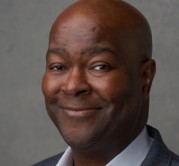5 ways to apply what you learn

At the recent August session of CEO Institute II, part of the networking buzz was about “how do we take this great information home most effectively?” One participant was planning a presentation to his CEO and other members of the executive team of everything he’d learned. Another said she would be sure to pause in her day-to-day work to reflect on what she had learned and how she could apply it to the task at hand.
This conversation about how to help program participants truly use what is learned in formal sessions is one we have regularly at CUES. The educational jargon for it is “applied learning”—an effort to integrate classroom experiences with real-life situations. The budgeting term is “return on investment,” which is something every credit union wants from its talent development efforts.
CUES has found a variety of ways to help participants get the most out of their learning. Here’s how to take advantage of five of them:
- Look for instructors who offer questions for reflection and invitations to consider how the classroom topics apply back at your credit union shop. The world-class Cornell University professors leading the recent August session of CEO Institute II regularly did this during their presentations. Make sure you take time to do the reflecting and think through your answers to the questions presented.
- Attend the sessions designed to help you plan how to apply what you’re learning. For example, at CEO/Executive Team Network coming up in late October in Savannah, Ga., CUES will offer a CEO-only session focused on digging deep into the growth strategies that will be covered in an earlier CEO panel session. The deep dive will be facilitated by keynote speaker Geoff Colvin, senior editor-at-large for Fortune magazine and author of Talent is Overrated: What Really Separates World-Class Performers from Everybody Else.
- Attend sessions designed to bring learning from outside the industry into the credit union space. At Directors Conference in Maui in early December, for example, Boston marathon bombing survivor Natalie Stavas will talk about the value of “running toward chaos.” The fact that Stavas—a physician—ran towards chaos that day meant four lives were saved. This session will challenge attendees to translate the value of running toward chaos into their credit union leadership—and think about what that could mean for their organizations and their members.
- Do the class assignments. For example, between segments I and II and again between segments II and III, participants in CEO Institute are invited to complete projects. These ask them to reflect on what’s been covered in class and apply it to actual initiatives at the credit union. (Notably, participants who do both projects and attend all three sessions receive the CCE—Certified Chief Executive—designation.) CUES’ newest board member, Kelly Marshall, CCE, CEO of $220 million Summerland Credit Union, Summerland, British Columbia, has told me that doing a between-segments project on how his CU should move forward with its insurance CUSO was instrumental to leading that project to success.
- Choose programs designed to help you develop a specific plan, tool or takeaway. For example, attendees of CUES School of IT Leadership™ in late September in Charleston, S.C., will create a personalized, ready-to-implement strategic IT action plan. The plans will build on the extensive knowledge of presenter Weldon “Butch” Leonardson, a former credit union IT executive and now director of IT leadership at CUES Supplier member and strategic partner Cornerstone Advisors, Scottsdale, Ariz.
CUES does a lot to help attendees leverage what they learn, while at the same time realizing that learning is a very personal process. I’d like to hear how the above five strategies work for you—and what else you do to make the most of your investment in education.





